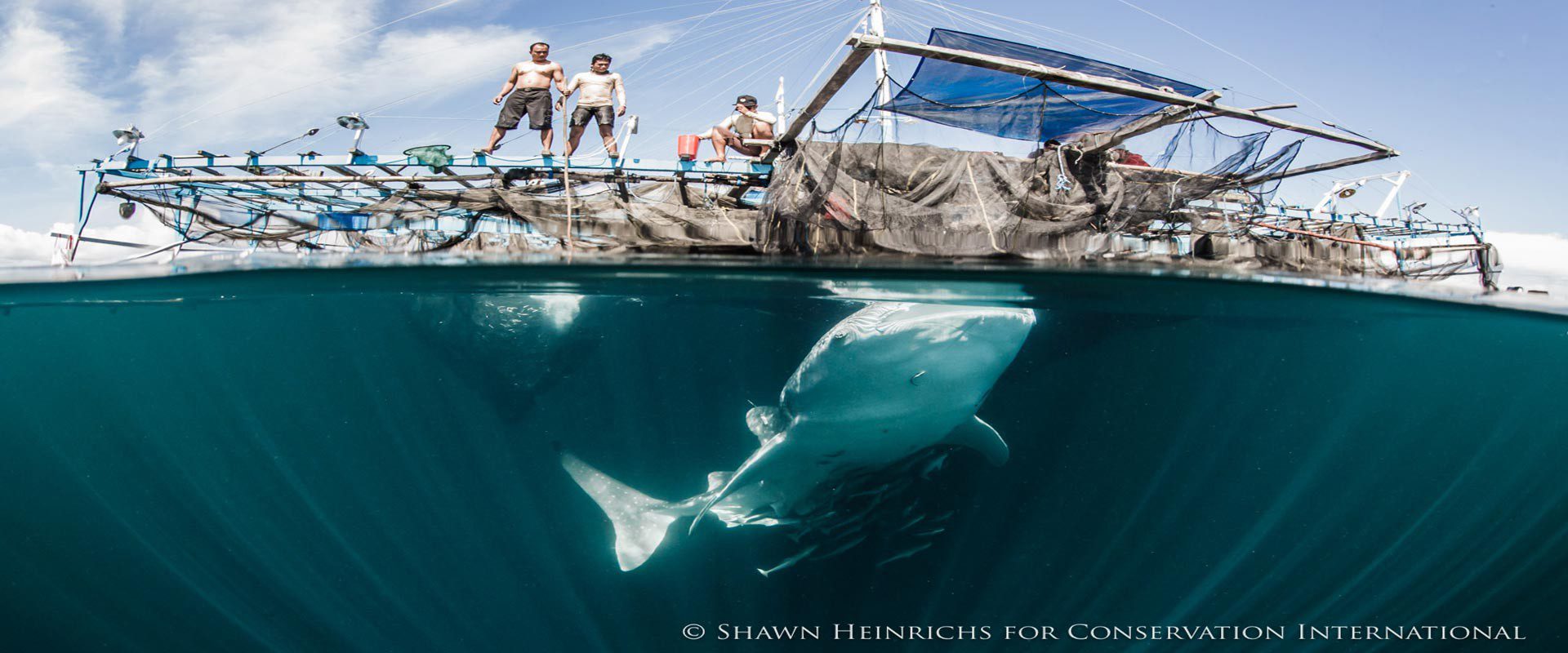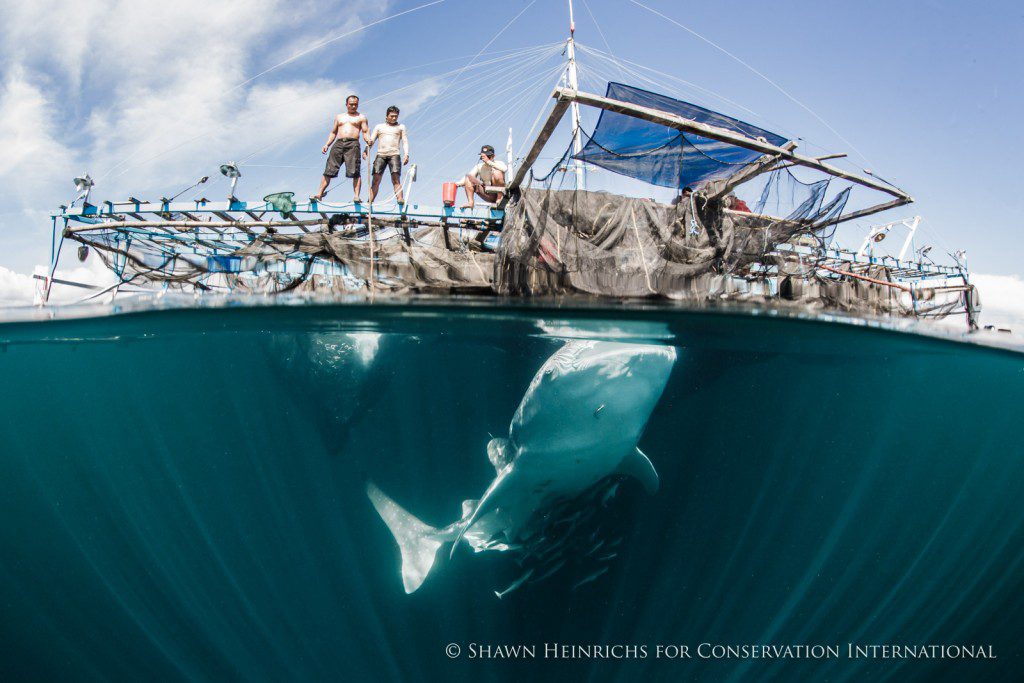Cendrawasih’s whale sharks….not such homebodies after all…..by MV Erdmann; photos by Shawn Heinrichs
Cendrawasih’s whale sharks….not such homebodies after all…..
Text by MV Erdmann; Photos by Shawn Heinrichs
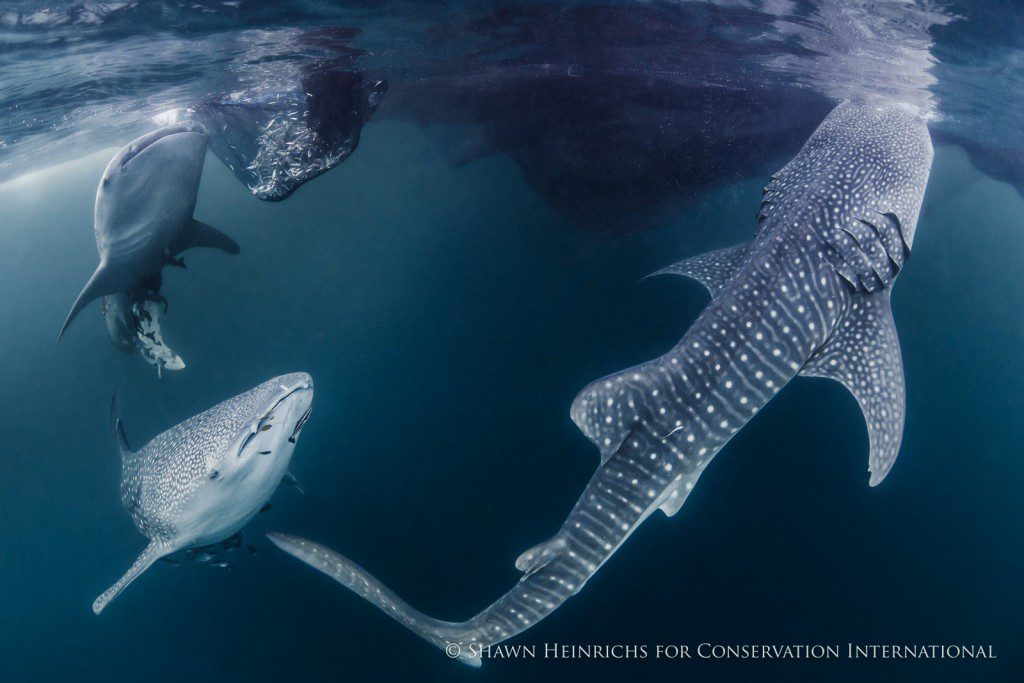
Cendrawasih’s world-renowned whale sharks frolic under the bagan lift-net fishing vessels near Kwatisore village in the south of the Bay.
For the past five years, Cendrawasih Bay’s friendly whale shark population has been attracting a lot of attention, primarily because of the near-certainty of having outstanding (and lengthy!) whale shark encounters during a visit to the region. Unlike many of the other known whale shark aggregations in the world (such as Ningaloo, Isla Mujeres, Belize, Galapagos and Donsol), which are highly seasonal, we now know with certainty that Cendrawasih has whale sharks present in the bay year round. Indeed, based on our observations combined with photos submitted by visitors to our BHS whale shark database, some highly-recognizeable individuals seem to be present throughout the year. Of course, one of the surest ways to confirm this is to monitor individual animals’ movements through satellite tagging – which is exactly what we’ve been doing in collaboration with the Cendrawasih Bay National Park Authority and Pak Bram Maruanaya and his local Kalilemon homestay in Kwatisore.
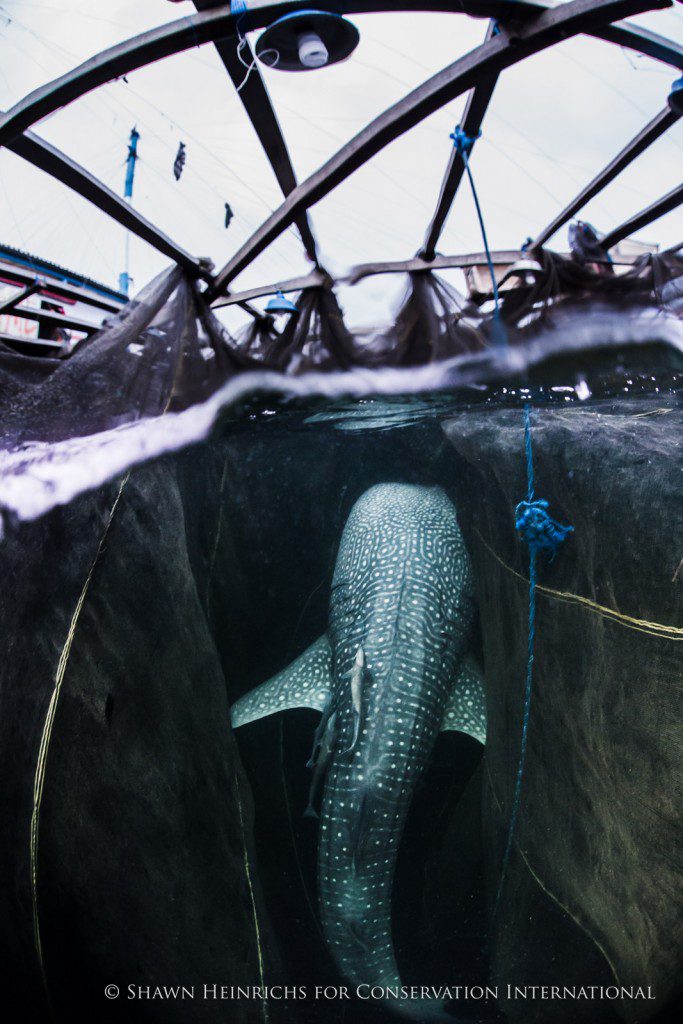
Whale sharks feeding under the bagans frequently end up as part of the catch of “ikan puri” baitfish, which affords a rare opportunity to quickly deploy a fin-mount satellite tag before releasing them.
Since June 2015, we’ve been able to tag 15 male whale sharks (ranging in size from 3 to 7 m in length) from Cendrawasih, using custom-made fin-mounted satellite tags by Wildlife Computers. These fin-mount tags have extended battery life which we hope will provide data for up to two years, and we’ve been delighted with their performance to date. All but one of the tags has been transmitting data very regularly (on average every 2-5 days) – basically each time one of the tagged sharks spends enough time on the surface for the tag to uplink to the ARGOS satellite network.
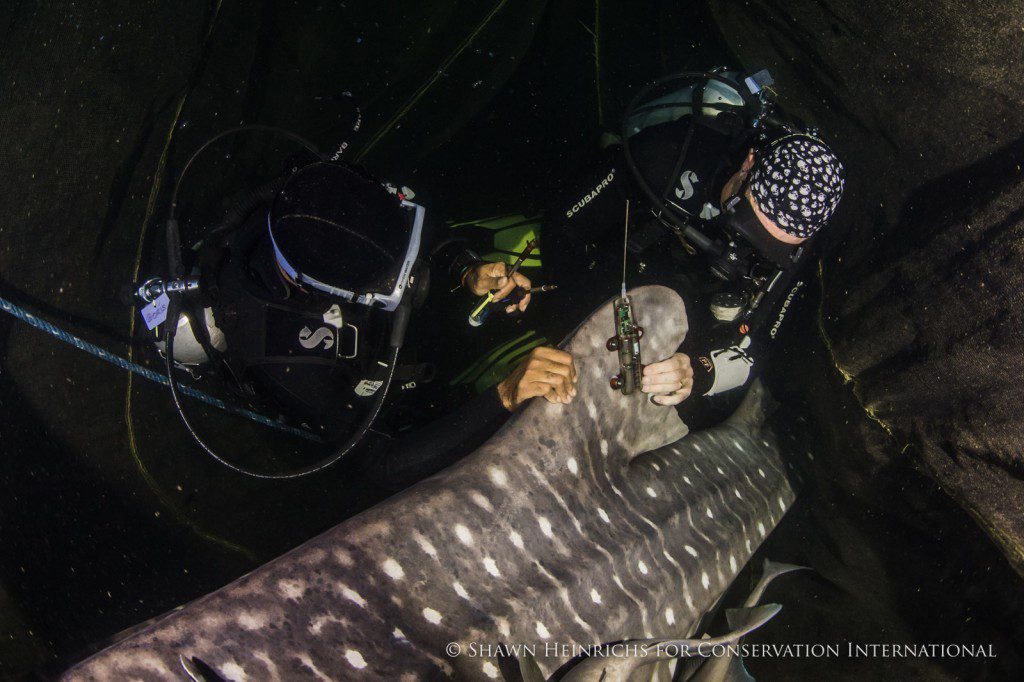
Mounting a fin-mount satellite tag takes only 10-15 minutes, but will provide near real-time data on the shark’s movements and diving behaviour for up to 2 years!
As previously reported back in November, the initial data received from June through October 2015 seemed to confirm what many suspected – that Cendrawasih whale sharks are largely “homebodies”, preferring to stay close to shore and feed upon the abundant ikan puri baitfish schools that abound in the coastal bays and estuarine areas of the southern and eastern coastlines of Cendrawasih. Which of course is a great thing for BHS marine tourism, as it means visitors can pretty much plan a trip any time of the year and have a very good chance of excellent whale shark interactions.
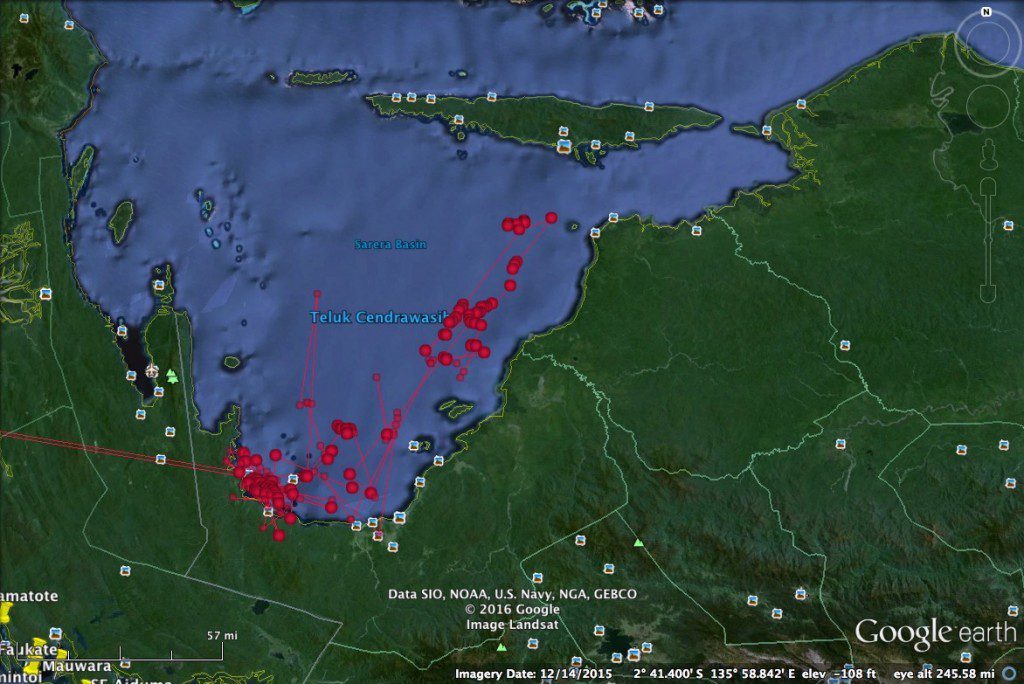
One of the more “typical” movement datasets. From June 2015 through March 2016, this 4.5m shark (“Goris”) has remained continuously within the south-eastern section of Cendrawasih Bay, venturing at one point north towards Yapen but soon returning to the Kwatisore region.
By December, however, we started to observe some very different behaviours that indicate Cendrawasih’s whale sharks might not be such homebodies after all! Just before Christmas, four of the sharks almost simultaneously moved towards the small exit to the bay between the eastern tip of Yapen Island and the Papuan mainland. Though two soon turned back, both “Jude” and “Wally” proceeded down the coastline towards Jayapura. Jude eventually turned back and returned to Kwatisore, but Wally continued down the coast – becoming the first of our tagged sharks to become an international visitor when he crossed into PNG waters in early January. While he appeared at one point to be returning to Cendrawasih (making it as far west as Jayapura), he’s since returned to the Wewak region of PNG (near the Sepik River outlet) and seems to be happily enjoying an extended vacation there!
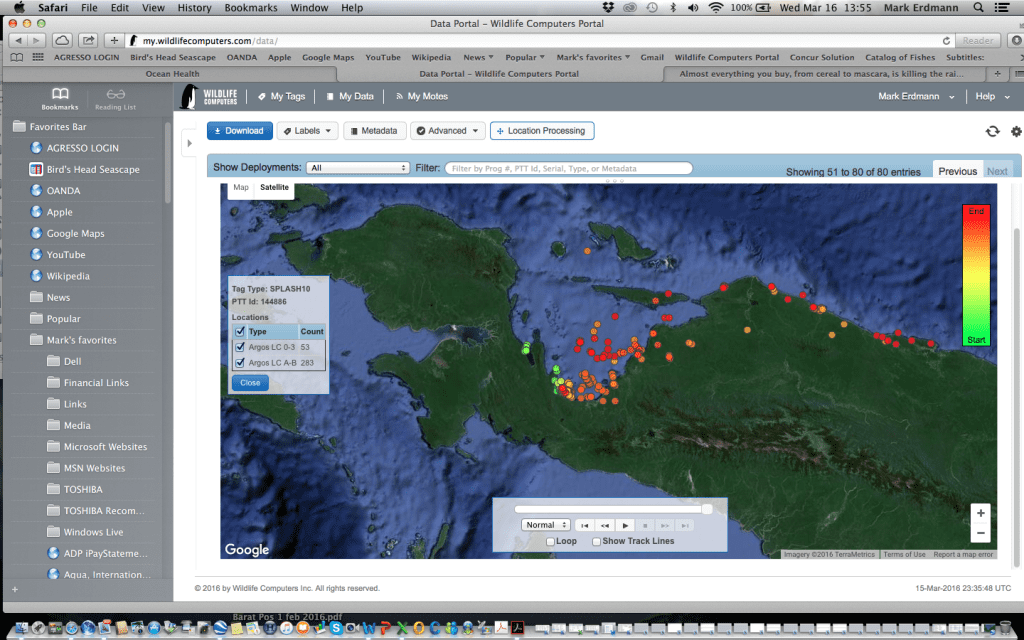
“Jude”, a 7m male named in memory of BHS diving enthusiast Judithe Bizot, took a “Christmas road-trip” down the coast to Jayapura, but then apparently became homesick and returned to Cendrawasih Bay. Note the GPS positions that appear slightly inland are not evidence of amphibious whale shark behavior (!!), but rather a result of several low-resolution satellite fixes with error margins over 50km…
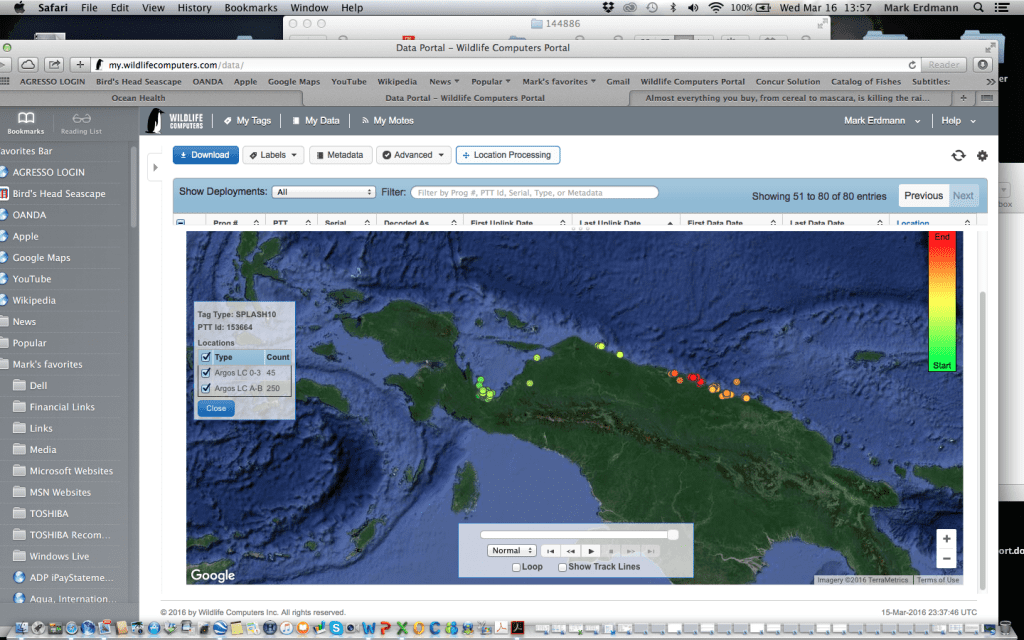
“Wally”, a 6m male tagged in late October 2015, has proven to be the most adventurous of the Cendrawasih whale sharks tagged so far. He left the bay just before Christmas (almost simultaneously with Jude!), and headed down the coast to Jayapura but then crossed the border into PNG – where he remains to this day on extended holiday near the Sepik River…
Similarly, one of our most recently tagged whale sharks, Ke’Opulupulu, headed almost immediately north into the center of the Bay (near the Auri Islands and atolls), then navigated to the south coast of Biak and Supiori Islands, where he’s remained for the past few weeks.
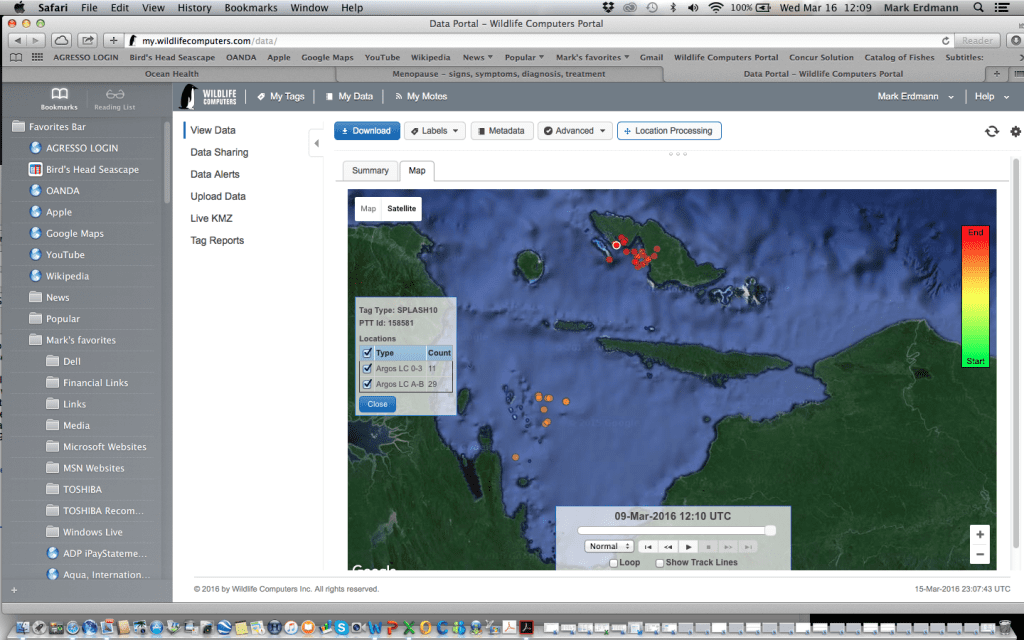
“Ke’Opulupulu” – a 5.8m male only recently tagged in mid-February, immediately moved north through the center of the Bay and is now hanging out along the south coast of Biak and Supiori Islands!
But horizontal movements are only part of the excitement we’ve recently recorded. The past 3 months have also seen a dramatic increase in deep-diving behaviour of many of our tagged sharks. While we did previously report a 672m deep diving record in October, we’ve now seen four of our sharks venture below 1000m depth, with the aptly-named “Moby” smashing the depth record (but fortunately not his tag’s depth gauge!) at 1416m!!! Even the “wee” 3m “Fijubeca” has dived to 700m depth. It’s still not clear why the sharks have shown such deep diving behaviour over the past few months – perhaps the El-Nino warmed surface waters are not providing enough food and they are searching for deeper plankton…
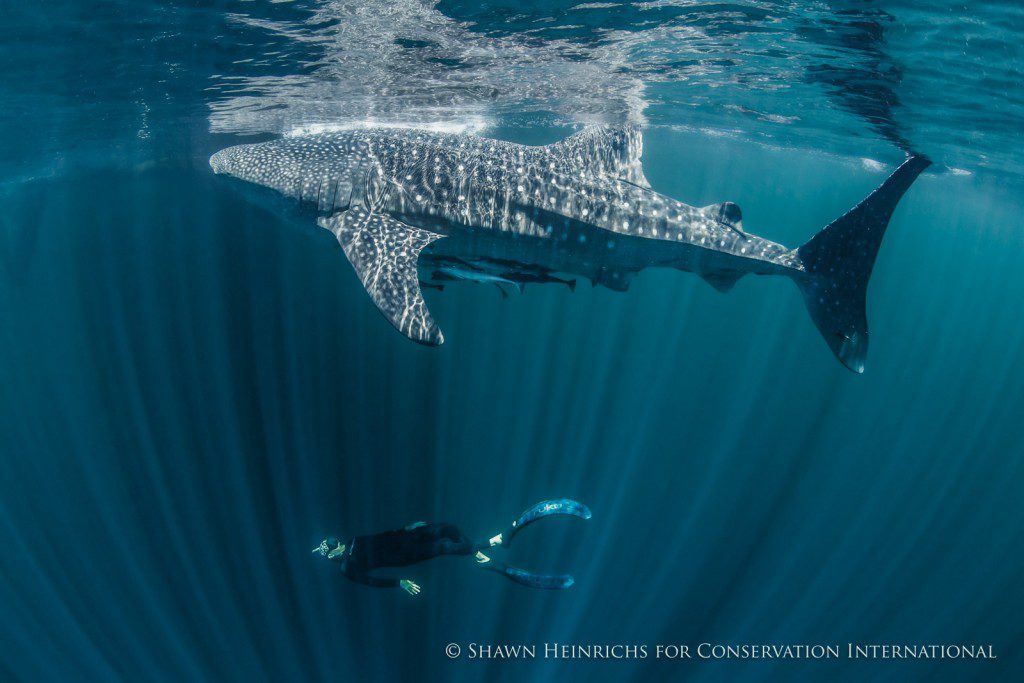
The author confirming the sex of this shark. Well over 95% of the sharks identified in Cendrawasih are juvenile or young adult males measuring 3-9m in total length – a situation which is reported from most of the main whale shark aggregations visited by tourists around the world. The whereabouts of the females and large adult males is unknown, though many scientists presume they spend their time in deeper waters…
Overall, we’re delighted to see these fin-mount tags proving so successful at divulging some of the secrets of Cendrawasih’s whale sharks. Its particularly noteworthy that the first 5 months’ of data seemed to simply confirm our scattered direct observations, but the past 4 months have revealed numerous exciting behaviours we didn’t expect. Who knows what the next few months’ data might reveal? Stay tuned and we’ll happily report back as the data keeps flowing in. And please remember – you too can contribute to our expanding knowledge and understanding of the charismatic megafauna of the Bird’s Head by contributing your photo IDs and observations of whale sharks and manta rays in the region to the databases maintained by this site!
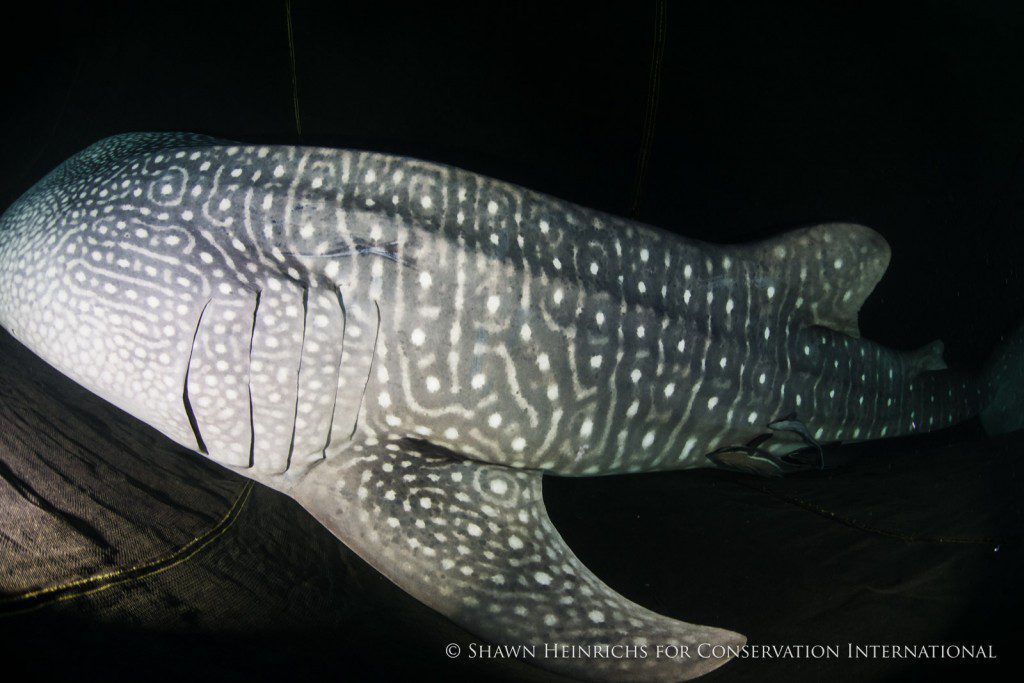
Be a good “Citizen Scientist”, and remember to submit your left-side photo identification “mug shots” to the BHS whale shark photo ID database!!
Mark Erdmann is Conservation International’s Vice President of Asia Pacific Marine Programs. Though now based in New Zealand after 23 years in Indonesia, he is still intimately involved with the Bird’s Head Seascape and frequently disappears into its remote corners for weeks on end….
Shawn Heinrichs is an Emmy Award-winning cinematographer, photographer and marine conservationist. An independent filmmaker, he is the founder of Blue Sphere Media, a production company specializing in underwater, adventure and conservation media. His work was recently featured in the film Racing Extinction.
A special thanks to Audrey, Shannon and Dennis Wong, Sally Timpson, and the management and guests of the True North expedition vessel for generously sponsoring the fin-mount whale shark satellite tags reported here, to Patti Seery and her amazing staff and crew of the Si Datu Buah liveaboard for hosting our most recent deployment expedition, and to OceanMax for continuing to support the tagging program with PropSpeed silicone foul-release coating for our satellite tags!





































